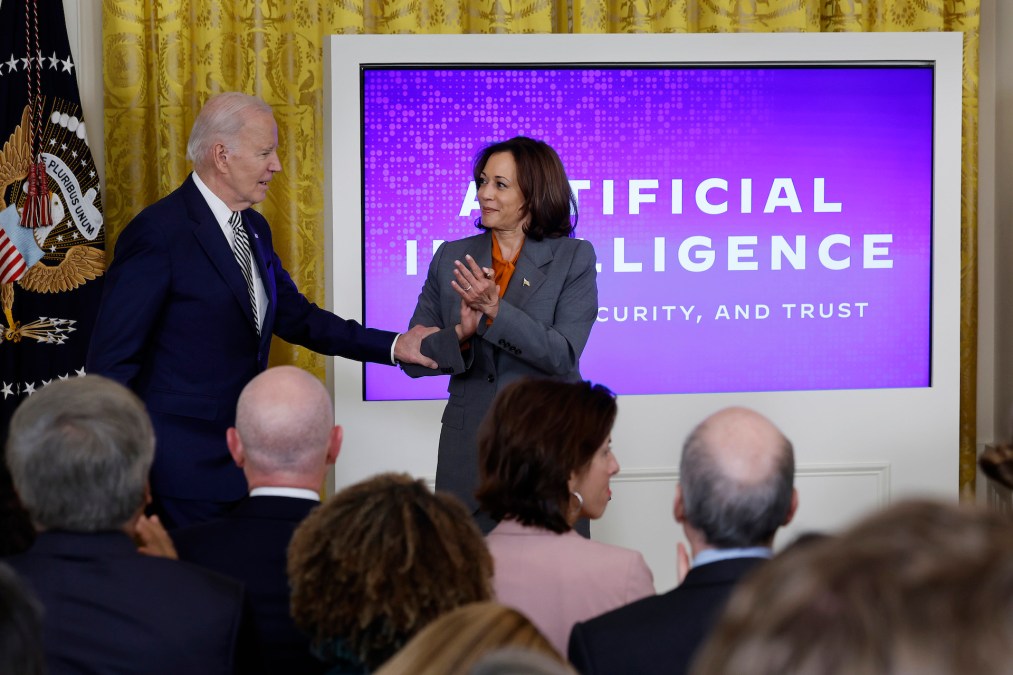The CAIO’s role in driving AI success across the federal government

Artificial intelligence isn’t just a buzzword — it’s a revolution transforming societies and the backbone of both private and public sector innovation.
While federal agencies have lagged commercial industry in recognizing AI’s potential impacts and adapting accordingly, the U.S. government is now rushing to catch up. On March 28, the White House Office of Management and Budget released its new AI governance memo as a follow-up to the October 2023 White House Executive Order on the Safe, Secure, and Trustworthy Use of Artificial Intelligence, and federal agencies have completed all required actions to date under the Executive Order on schedule.
As required by the executive order, all federal agencies must now designate a Chief AI Officer (CAIO) to coordinate their agency’s use of AI, promote AI innovation in their agency, and manage risks from their agency’s use of AI. As a consequence, the government is looking for 400 CAIOs and many federal departments and agencies have already named one.
The creation of CAIO positions is a significant step toward an AI-enabled federal government. However, it presents challenges akin to those faced in the private sector. To navigate these challenges successfully, CAIOs should take five immediate actions to set the stage for success:
Lead the Mission: CAIOs must articulate a clear vision for AI adoption within their agencies, ensuring alignment and serving as the focal point for implementing AI priorities. The Chief AI Officer should report directly to the department or agency head to demonstrate that they have their full-throated support.
Balance Innovation and Risk: Many government functions are considered no-fail missions—protecting the nation, providing uninterrupted financial and medical benefits, securing domestic and international travel, building weapon systems, and serving as the nation’s eyes and ears through intelligence collection and analysis. Even seemingly small error rates may be intolerable. Yet with AI, risk aversion offers a path to stagnation and obsolescence. CAIOs should fight to strike a balance between each agency’s legitimate concerns about risks, and the imperative to accelerate AI adoption and integration.
Quick Wins and Strategy: CAIOs should identify low-hanging fruit that, with focused senior-level attention and a burst of resources, can deliver demonstrable outcomes that are clearly AI-driven. This creates a virtuous cycle of success that opens the aperture for the more difficult and ambitious work to come. AI pilots can be chosen thoughtfully to demonstrate hypotheses that can then be affirmed in each department’s AI strategy. These quick wins can build momentum for broader AI strategy implementation.
Budgeting and Procurement: The budgets that CAIOs are working with now were likely built in early 2022 before large language models or generative AI were widely available. CAIOs should work with agency chief financial officers and department comptrollers to identify current-year funds for reprogramming. At the same time, they need to shape future year budgets in ways that reflect the required infusion of resources in support of the entire AI lifecycle.
Yet even when funds are identified, procurement processes often move slower than the pace of technology — a product on the cutting edge today may be on the path to obsolescence tomorrow. CAIOs should work with acquisition and contracting officials to take full advantage of extant authorities while seeking new and more flexible authorities to accelerate AI procurement.
Talent Acquisition: The scarcity of AI talent necessitates creative approaches to recruitment and retention within the public sector. CAIOs should push to hire AI experts directly, but to move faster they should also hire outside AI experts for temporary assignments through pathways such as fellowships from corporations, think tanks, and academia, or in excepted service or special government employee roles. CAIOs can pursue a strategy of establishing a centralized AI talent hub that the rest of the department or agency can access, or of placing talent in key directorates and offices that are leveraging AI. A blend of different human capital solutions will help accelerate AI adoption across the government.
These strategies are not only aimed at integrating AI into federal operations but also at leveraging its potential to enhance public service delivery. The CAIO’s role is pivotal in this process, requiring a blend of visionary leadership, strategic planning, and operational acumen.
The experiences of the Defense Department’s Joint AI Center and Chief Digital and AI Office and the Department of Homeland Security’s AI Task Force exemplify the multifaceted opportunities and challenges AI presents. These initiatives highlighted the necessity for a centralized strategy to provide direction, coupled with the flexibility to foster innovation and experimentation within a decentralized framework. Absent the proper balance between centralization and decentralization, one of two things will happen: AI will never scale beyond pilot projects — overly decentralized — or the end users’ needs will be marginalized to the point of failure — overly centralized. The balancing act between rapid technological adoption and the careful management of associated risks underscores the complex landscape that CAIOs navigate.
The decision to institutionalize the role of CAIOs demonstrates a clear acknowledgment of AI’s strategic significance. This action signifies a deeper commitment to keeping the United States at the forefront of technological innovation, emphasizing the use of AI to improve public service delivery, enhance operational efficiency, and safeguard national interests. As we navigate this still-uncharted territory, leadership, innovation, and responsible governance will be essential in realizing the full promise of AI within the federal realm. CAIOs will play an indispensable role in shaping the government’s AI-enhanced future.
Joel Meyer served as the Deputy Assistant Secretary of Homeland Security for Strategic Initiatives in the Biden Administration, where he drove the creation of DHS’s Artificial Intelligence Task Force and the Third Quadrennial Homeland Security Review. He has led public sector businesses at three artificial intelligence technology startups, including currently serving as President of Public Sector at Domino Data Lab, provider of the leading enterprise AI platform trusted by over 20% of the Fortune 100 and major government agencies.
Lieutenant General John (Jack) N.T. Shanahan, United States Air Force, Retired, retired in 2020 after a 36-year military career. Jack served in a variety of operational and staff positions in various fields including flying, intelligence, policy, and command and control. As the first Director of the Algorithmic Warfare Cross-Functional Team (Project Maven), Jack established and led DoD’s pathfinder AI fielding program charged with bringing AI capabilities to intelligence collection and analysis. In his final assignment, he served as the inaugural Director of the U.S. Department of Defense Joint Artificial Intelligence Center.
Both authors serve as Commissioners on the Atlantic Council’s Commission on Software-Defined Warfare.






